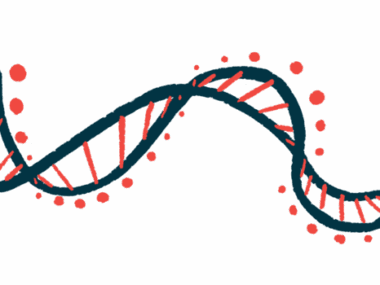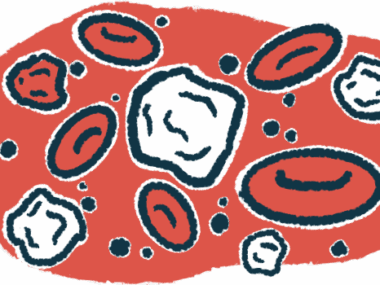Traditional Chinese medicine QJZG may help ease Sjögren’s disease
Blend of herbs could reduce inflammatory molecules, associated tissue damage
Written by |

A traditional Chinese medicine formulation called Qihuang Jianpi ZiShen Granule (QJZG) may help to alleviate Sjögren’s disease by reducing inflammatory molecules and associated tissue damage, according to computer simulations and tests in a cell model of the disease.
“This study provides evidence supporting the use of Chinese medicine in treating [Sjögren’s disease],” researchers wrote. “However, further research is required to fully elucidate the underlying mechanisms of QJZG in [Sjögren’s disease].”
The study, “Integrated network pharmacology, transcriptomics, and experimental validation to explore the mechanism of Qihuang Jianpi Zishen granules against Sjögren’s syndrome,” was published in Scientific Reports.
QJZG helped ease dry eyes, other symptoms in Sjögren’s patients
Sjögren’s disease is an autoimmune disorder that causes inflammation in the body’s tissues, most commonly the salivary glands and tear glands. The causes of this inflammation aren’t entirely understood, but inflammation-controlling signaling molecules called cytokines are thought to play a role.
The interferon-gamma (IFN-gamma) cytokine is produced at high levels by immune cells in the salivary glands of people with Sjögren’s. It “exerts a pro-inflammatory effect on the salivary glands by stimulating the production of cytokines” and other immune-related molecules, the researchers wrote.
QJZG, a blend of eight herbs, is derived from two classical traditional Chinese medicine formulations and is designed to have immunoregulatory effects. According to the researchers, this formulation has helped ease “symptoms such as dry eyes, dry mouth, dry skin, and fatigue” in people with Sjögren’s.
In this study, four scientists in China conducted a series of computer analyses to better understand QJZG’s potential therapeutic effects in Sjögren’s disease and validated their findings in a disease cell model that they created.
By using several approaches to identify genes that are dysregulated in Sjögren’s, the researchers compiled a final set of 1,570 potential therapeutic targets. They then used the Traditional Chinese Medicine Systems Pharmacology Database and Analysis Platform to identify the genes known to be affected by the various components of QJZG.
By combining these data, the team found 99 Sjögren’s-related genes that are targeted by QJZG, which may explain the potential therapeutic effects of the formulation in this patient population.
Further computational analyses revealed that these 99 intersecting genes were involved in several molecular functions and pathways, including cytokine activity, IL-17 and TNF signaling pathway, and a form of programmed cell death called apoptosis.
“Both the TNF and IL-17 signaling pathways are strongly implicated in the inflammatory response observed in [Sjögren’s], with apoptosis playing a critical role in its [development],” the researchers wrote.
Team focused on TNF signaling pathway, its associated targets
Because TNF promotes the production of IL-1-beta and IL-6, and these three cytokines were identified as targets in the previous analyses, the team focused “on the TNF signaling pathway and its associated targets (IL-1-beta, TNF, and IL-6) for further investigation.”
To support their computer analysis, the researchers performed a series of tests using the new Sjögren’s cell model, which is based on lab-grown human salivary gland cells exposed to IFN-gamma. This treatment causes the cells to start producing pro-inflammatory cytokines such as TNF-alpha, IL-6, and IL-1-beta, and some of them undergo apoptosis.
When comparing gene activity between treated and nontreated cells, the team found similar results to previous computer simulations in terms of suppressed genes and associated pathways with QJZG treatment.
Our experiments showed that the efficacy of QJZG in relieving inflammation was comparable to that of TGP, suggesting that QJZG has potential for clinical application in the treatment of [Sjögren’s disease].
Specifically, they found that the formulation significantly reduced the levels of the pro-inflammatory cytokines TNF-alpha, IL-6, and IL-1-beta, and normalized apoptosis markers in the Sjögren’s cell model.
“We investigated the mechanism through which QJZG alleviates inflammation in [Sjögren’s] using network pharmacology and validated these findings through preliminary cell experiments,” the researchers wrote. “The results suggest that the therapeutic effects of QJZG may be mediated via the TNF signaling pathway, potentially by downregulating pro-inflammatory factors such as [TNF-alpha], IL-6, and [IL-1-beta], thereby reducing inflammation-induced damage to the salivary glands.”
Previous studies using similar methods have suggested that glycosides of paeony (TGP), a compound extracted from the root of the peony plant, can ease Sjögren’s by reducing inflammatory cytokines. In the researchers’ experiments, the inflammation-dampening capacity of QJZG was similar to that of TGP.
“Our experiments showed that the efficacy of QJZG in relieving inflammation was comparable to that of TGP, suggesting that QJZG has potential for clinical application in the treatment of [Sjögren’s disease],” the scientists wrote.






